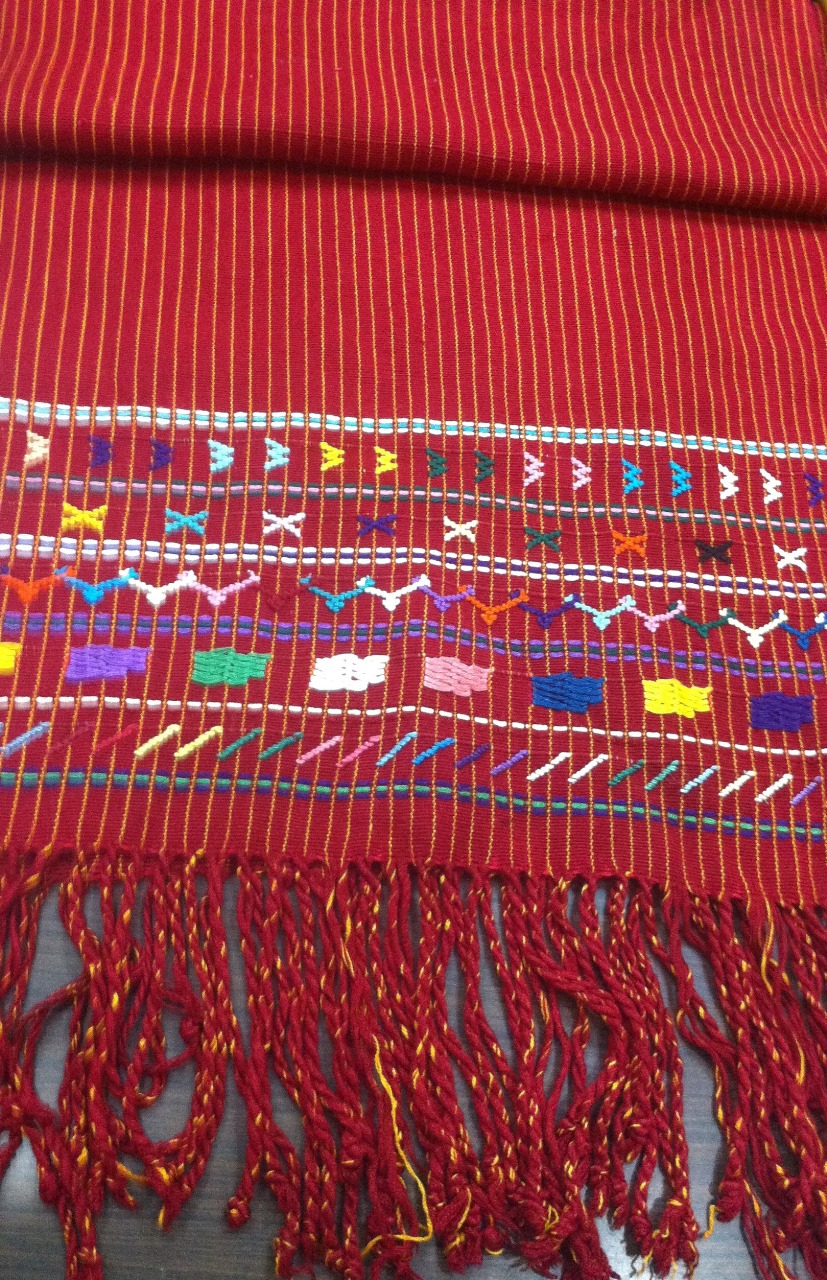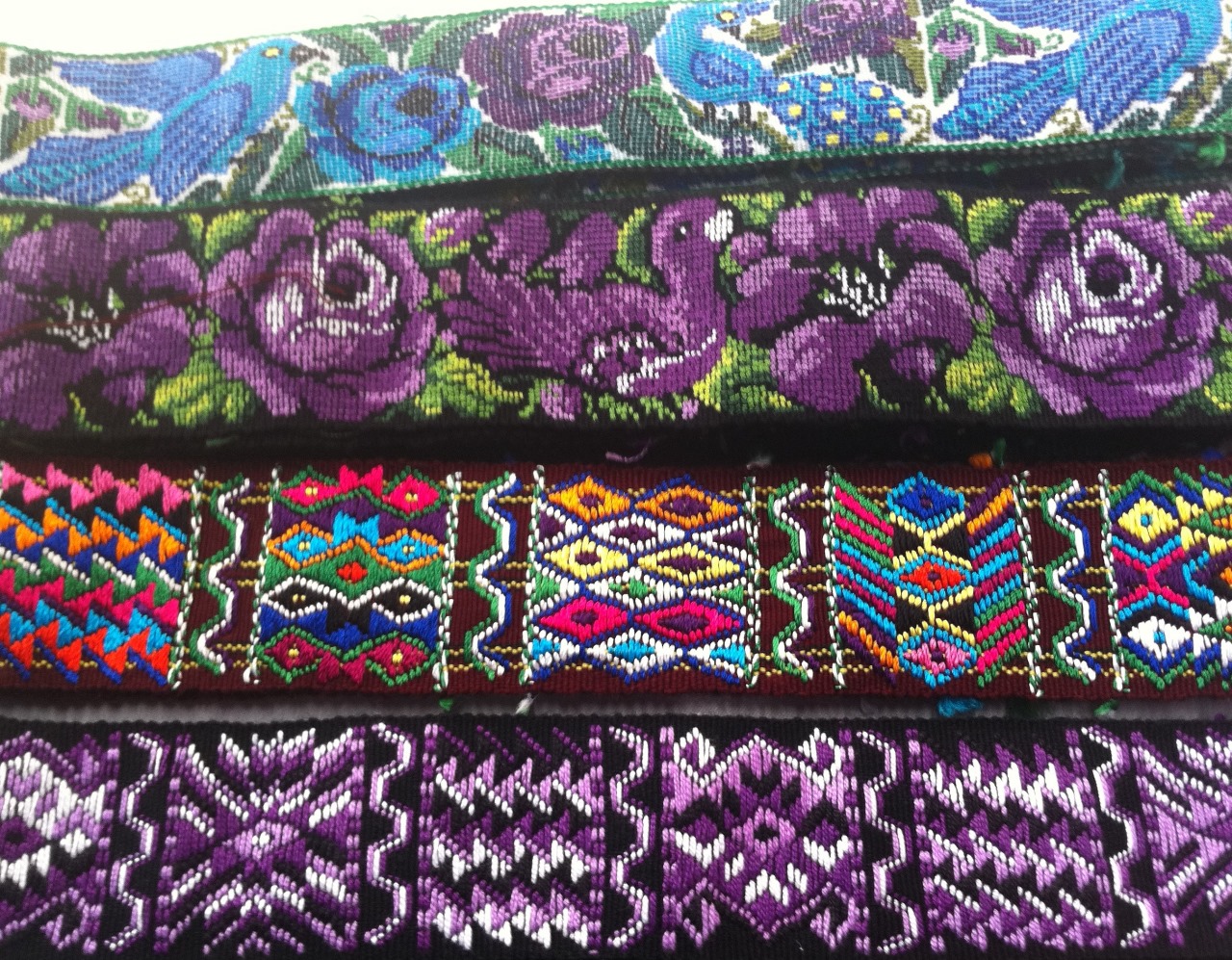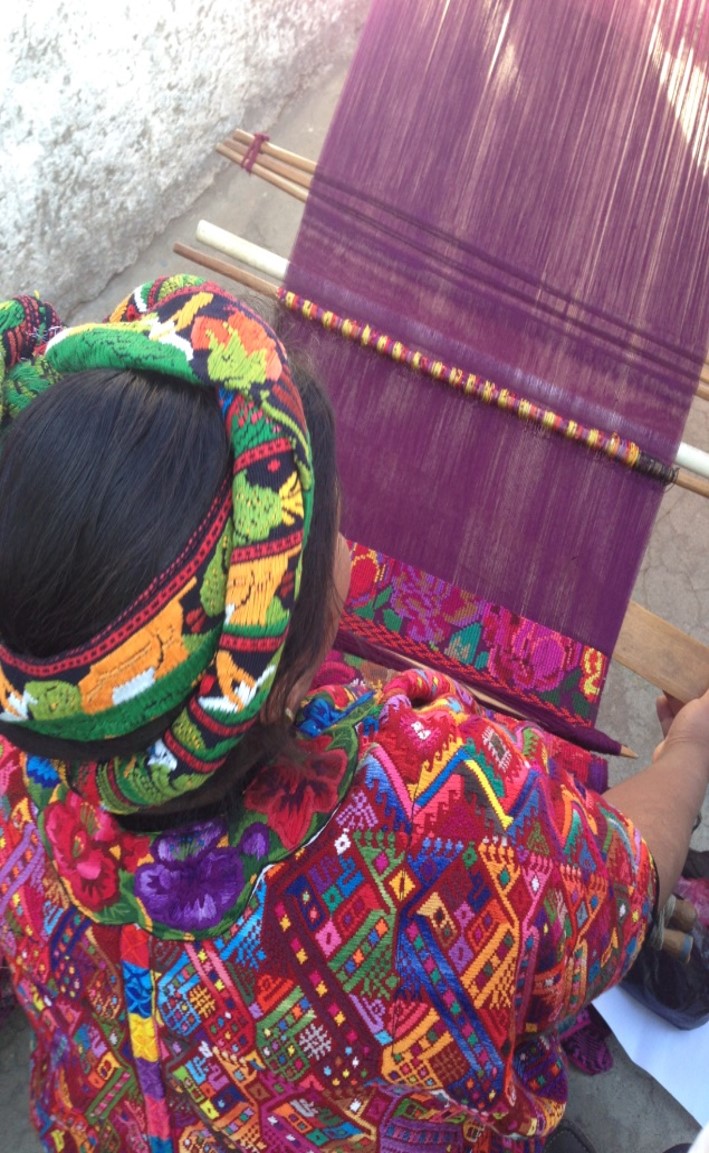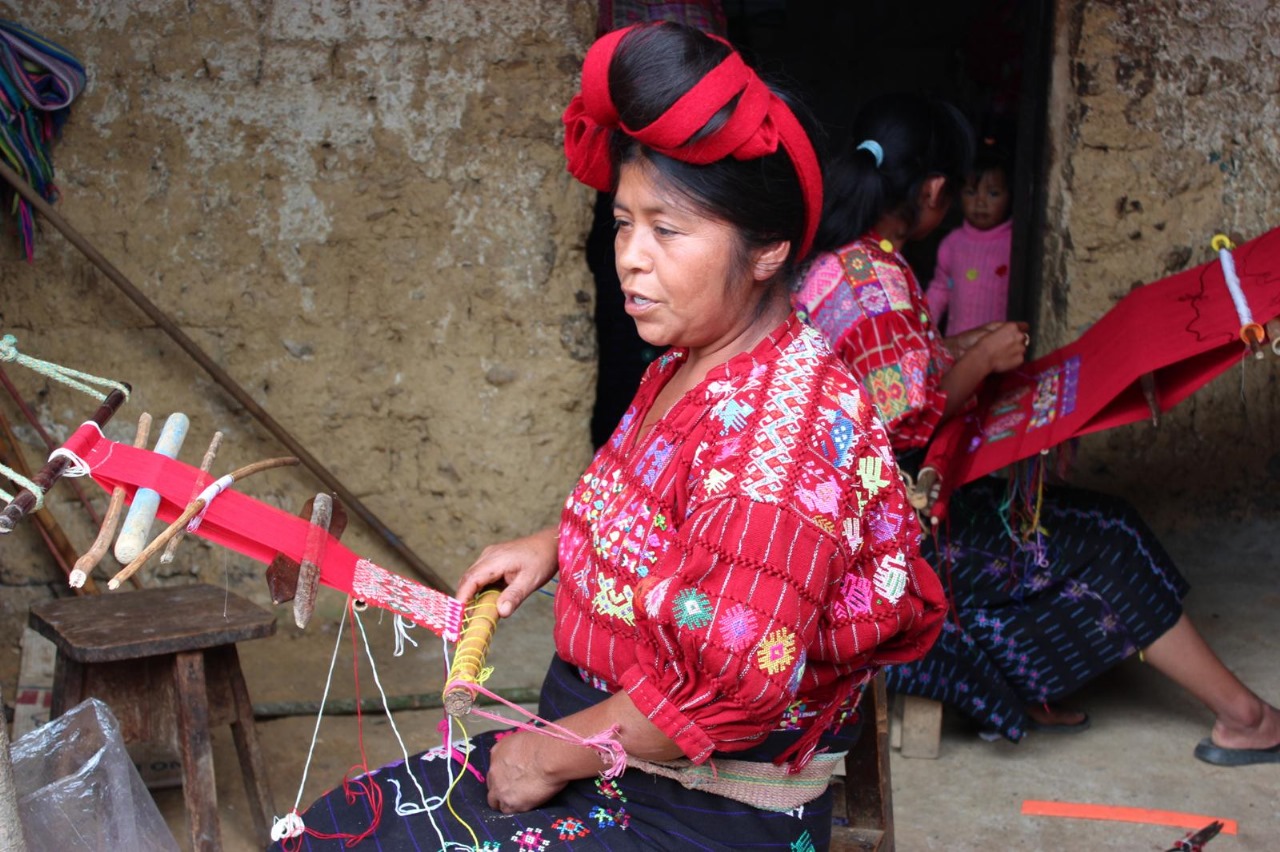Description
En Guatemala, la artesanía textil se remota a tiempos prehispánicos, como se ha podido evidenciar en los códices y vasijas mayas, en dónde se muestran imágenes de personas portando lienzos tejidos como parte de su vestimenta.
Con la llegada de los españoles al territorio guatemalteco (S. XVI), los nativos adoptaron rasgos de la cultura española, que se mezcló con los prehispánicos y esto aún se refleja en la vestimenta actual que conserva y usa diariamente, gran parte de la población indígena, la cual mayoritariamente está concentrada en el altiplano occidental del país.
La pieza más elaborada de esta indumentaria es el güipil o blusa, que regularmente es tejido con hilo de algodón en el telar de cintura o de palito. Este, según la técnica utilizada para su ornamentación, variará en tiempo de elaboración y costo. Un güipil sencillo de rayas lisas puede tomar pocos días de elaboración, mientras que un güipil cargado de diferentes simbolismos (flores, animales, figuras humanas o geométricas) brocadas directamente desde el telar, puede tomarle meses a la tejedora para terminar la pieza, la cual puede aún llevar un cuello bordado a mano como complemento decorativo.
El lienzo del telar de cintura regularmente es angosto (aproximadamente 21”) por lo que muchas veces se necesitan dos lienzos para formar el güipil, siendo estos unidos por una randa decorativa bordada a mano en vistosos colores.
El corte o falda, es regularmente tejido en telar de pedal, en colores lisos o con aplicación de jaspes (o técnica de Ikat). El proceso de tejeduría en telar de pedal es más rápido, más ancho y tradicionalmente es realizado por hombres, aunque ya muchas mujeres han aprendido a manipularlo. El corte se amarra con una faja también tejida a mano con vistosos brocados y otras piezas como el tocado (adorno en la cabeza), el perraje o el tzute (lienzos para abrigar o cargar a los niños pequeños), terminan de conformar la indumentaria textil maya y son tejidas artesanalmente por mujeres en su gran mayoría, que aprenden la técnica desde niñas, la cual es transmitida de generación en generación.
El textil artesanal guatemalteco se caracteriza por el uso de vivos y múltiples colores, siendo tantos los colores y diseños utilizados, característicos de los diferentes municipios de donde provienen. Por su vistosidad y demanda, las diferentes técnicas de tejido textil se han aplicado a lienzos que son luego aplicados en la confección de productos ofrecidos al merado turístico o de exportación: manteles, porta vados, servilletas o centros de mesa, bolsas y carteras, chalinas y bufandas, cojines o decoración de pared, entre otras categorías.
english
Handmade Textiles
In Guatemala, textile craftsmanship dates back to pre-Hispanic times, as evidenced in Mayan codices and vessels, where images of people carrying woven canvases as part of their clothing are shown. With the arrival of the Spaniards to Guatemalan territory (16th century), the natives adopted traits of the Spanish culture, which was mixed with the pre-Hispanic ones and this is still reflected in the current clothing that is preserved and worn daily by a large part of the indigenous population, which is mostly concentrated in the western highlands of the country.
The most elaborate piece of this garment is the güipil or blouse, which is usually woven with cotton thread on the backstrap loom or stick. This, depending on the technique used for its ornamentation, will vary in processing time and cost. A simple güipil with smooth stripes can take a few days to make, while a güipil loaded with different symbolisms (flowers, animals, human or geometric figures) brocaded directly from the loom, can take months for the weaver to finish the piece, which can even have a hand-embroidered collar as a decorative accessory.
The canvas of the backstrap loom is usually narrow (approx. 21″), so many times two canvases are needed to form the güipil, these being joined by a decorative randa embroidered by hand in bright colours.
The cut or skirt is usually woven on a pedal loom, in plain colours or with the application of jaspers (or Ikat technique). The process of weaving on a pedal loom is faster, wider and is traditionally done by men, although many women have already learned to manipulate it. The skirt is tied with a sash, also hand-woven with colourful brocades and other pieces such as the headdress (ornament on the head), the perraje or the tzute (canvases to keep or carry small children), they finish making up the Mayan textile clothing and are woven by hand by women for the most part, who learn the technique from childhood. which is passed down from generation to generation.
Guatemalan handmade textiles are characterised by the use of vivid and multiple colours, with so many colours and designs used, characteristic of the different municipalities where they come from.
Guatemalan textiles are characterised by the use of multiple bright colours, being characteristics of the different regions from which they come. Due to their attractiveness and demand, they are used in the production for tourist or export markets: tablecloths, door holders, napkins or centrepieces, bags and wallets, shawl and scarves, cushions or wall decoration, among other categories.






Reviews
There are no reviews yet.